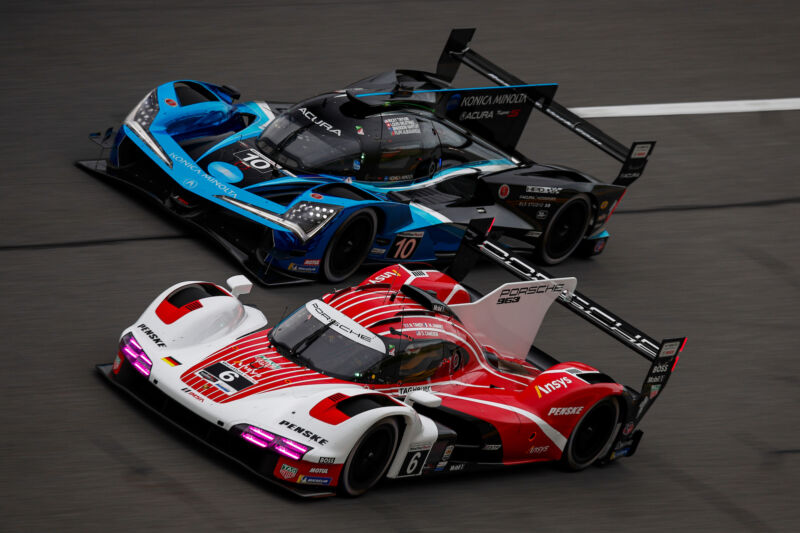Why is GTP suddenly the hottest thing in racing?
Ars Technica 2023-01-24

Enlarge / The #6 Porsche Penske 963 and the #10 Konica Minolta Acura ARX-06 run on Daytona's banking during the 2023 Roar Before the 24. With so many miles of testing completed, the Porsches are probably the favorites, but 24 hours is a long time in racing, and a lot can happen. (credit: Jake Galstad/LAT Images)
BMW provided flights from DC to San Francisco and back, plus five nights in a hotel, so we could attend Monterey Car Week. While I was there, I spoke with people from Acura and Lamborghini. Ars does not accept paid editorial content.This past weekend saw the successful conclusion of the International Motor Sports Association's "Roar Before the 24," the series' preseason test ahead of this coming weekend's Rolex 24, a 24-hour race held each January at Daytona International Speedway in Florida. This year, the preseason test was more important than most, as there's a new kind of race car, called the GTP, competing in the Rolex 24 in 2023.
The new hybrid prototype category has attracted more manufacturer interest than we've seen in many years, with brands like Acura and Porsche building new cars to compete and others, like Lamborghini, waiting in the wings to join next year. But the biggest question is whether these new race cars will be able to make it to the end of the race. As in the larger automotive industry, supply shortages mean that spare parts are scarce, so the consequences of a crash are calamitous.
But what makes GTP—originally called LMDh—so attractive to car makers? I asked David Salters, head of Honda Performance Development, which oversees the Japanese OEM's racing activities in North America.